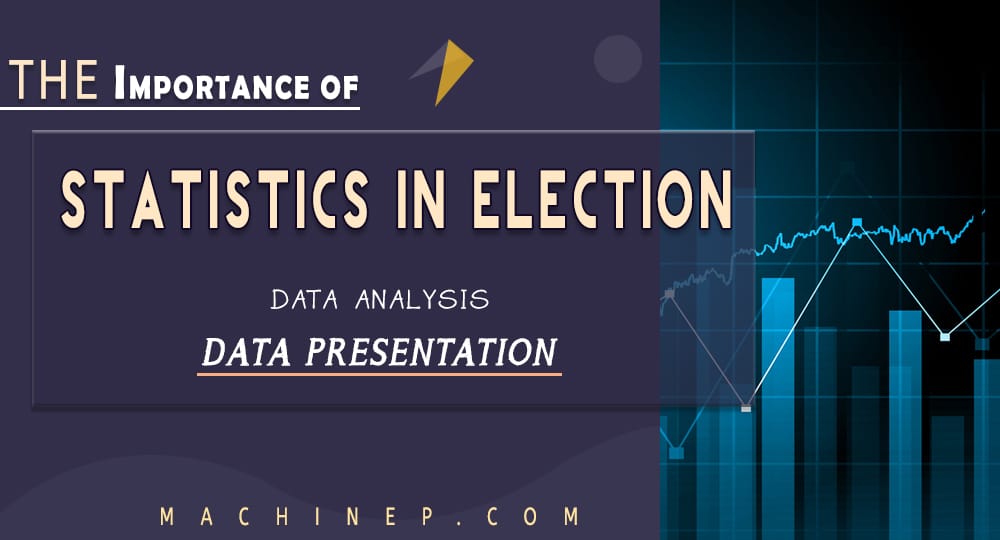Data analysis has become an essential part of modern-day election campaigns. By using statistical methods to analyze voter behavior, demographics, and opinions, political candidates and parties can make informed decisions about campaign strategies and messaging. In this article, we will explore the role of statistics in elections and how it shapes our political landscape.
What is Statistics in Elections?
Statistics in elections refers to the application of statistical methods to analyze and interpret data related to elections. This data can include voter demographics, voter behavior, public opinion polling, campaign finance, and many other types of information. By using statistical analysis, political campaigns, and parties can make data-driven decisions about how to target and engage voters.
How Statistics Shapes our Political Landscape
Let’s explore some ways that statistics shape our political landscape:
- Identifying target voters: Statistical analysis can help political campaigns identify and target specific demographic groups of voters who are more likely to support a particular candidate or party. This information can help campaigns create tailored messages and outreach efforts to maximize support among key voter groups.
- Optimizing campaign resources: By using statistical analysis, campaigns can optimize their resources by focusing their spending on the most effective advertising channels and target demographics. This information can help campaigns make more informed decisions about where to allocate their limited resources.
- Measuring voter sentiment: Statistical analysis of public opinion polling can help political campaigns understand voter sentiment and measure changes in public opinion over time. This information can help campaigns adjust their messaging and tactics as needed to stay on track.
- Evaluating the effectiveness of campaign strategies: By analyzing voter behavior and engagement data, political campaigns can evaluate the effectiveness of their strategies and make data-driven adjustments as needed. For example, a campaign may analyze data on voter turnout in specific neighborhoods to determine whether a particular canvassing strategy was effective.
Examples of Statistics in Elections
Here are some examples of how statistics can be applied in election campaigns:
- A campaign may use demographic data to target specific voter groups with tailored messaging and advertising.
- A political party may use public opinion polling data to understand the issues that are most important to voters and shape their party platform.
- A campaign may analyze voter turnout data to determine which outreach strategies were most effective in mobilizing voters.
- A political action committee (PAC) may use campaign finance data to determine which candidates or issues to support with donations.
Importance of Statistics in Election
- Accuracy in the Arrangement of Election Data and Information
- Statistics makes the Presentation of Data and Information easy for a good readability
- Statistics is a great tool for handling multiple and complex election data
- Statistics exposes the historical aspect of electoral candidates
- Statistics assures 100% accuracy and limits electoral malpractices
1. Accuracy in the Arrangement of Election Data and Information
Statistics practically accurately presents election data and information. This entails that if all the necessary data and information are well-outlined and arranged in a statistical approach, then they should be considered accurate. In most populated countries, organizations, and companies, elections are conducted for many reasons and this requires handling huge data of information about the candidates and the electorates.
Most times, these data and information as misplaced, misunderstood, misread, and even misinterpreted. But, the presence of a good statistical approach plays a major role in the proper arrangement of the Election Data and Information and makes it less vague and cumbersome even for the layman.
2. Statistics makes the Presentation of data and information easy for a good readability
Statistics, as you would observe, has a significant duty to structure and present data and information for good readability. Most times, statistics is misunderstood to be a difficult approach for data analysis, but it is the best approach for the presentation, analysis, and manipulation of huge data in an empirical manner. The election activity is a practical example of one of the activities that involve huge data and information analysis.
3. Statistics is a great tool for handling multiple and complex election data
To handle multiple and complex election data, statistics is a great tool to employ as it accurately presents and analyses data that is stored with the aid of graphs and other statistical tools. Most cases of misinterpretation, mismanagement, and poor arrangement of data and information are not products of a good statistical approach.
4. Statistics exposes the historical aspect of the electoral candidates
The electoral candidates involved in any electoral activity are always scrutinized in many ways such as the historical aspect of the candidates. And, most times, this history, which is the notable events and activities of the candidates, is traceable and trackable through the statistical documentation done over time.
In other words, statistics practically exposes the historical aspect of the electoral candidates, and even the electorates and everybody involved in the franchise.
5. Statistics assures 100% accuracy and limits electoral malpractices
In the analysis and presentation of election data and information, a statistical approach is used for 100% accuracy in calculation, analysis, presentation, and referencing of even the minutest aspect of the election activity.
Furthermore, statistics helps to limit electoral malpractices because it is practically difficult to maneuver the results, especially if the election was planned and arranged in a good statistical manner with duplicates of original data.
Conclusion
In conclusion, statistics play a critical role in shaping our political landscape. By using statistical analysis, political campaigns, and parties can make informed decisions about how to target and engage voters, allocate resources, measure voter sentiment, and evaluate the effectiveness of their strategies. Therefore, political campaigns and parties need to have a strong foundation in statistics and data analysis to stay competitive in today’s political climate. So, start leveraging the power of statistics in elections today and watch your campaign gain a competitive edge.






I’m impressed, I have to say. Really not often do I encounter a weblog that’s each educative and entertaining, your thought is excellent;
You got a very great website and helpful article.
This article is pleasant to me.
This is helpful, thanks.
I’m glad to find this, and it has saved me a lot of time.
Brilliant
Great writeup
Thanks for this detailed article
optimal content